Understanding chess rules Normal Worksheets for Ages 3-7
5 filtered results
-
From - To
Explore our "Understanding Chess Rules" worksheets designed specifically for children ages 3-7! These engaging and interactive resources introduce young learners to the basics of chess in a fun and accessible way. With colorful visuals and simple instructions, kids will grasp essential rules and concepts, such as piece movement, board setup, and basic strategies. Our worksheets promote critical thinking and problem-solving skills, making chess a perfect educational tool for developing young minds. Ideal for home or classroom activities, these printables make learning chess enjoyable and exciting. Download your worksheets today and help your child master the royal game!
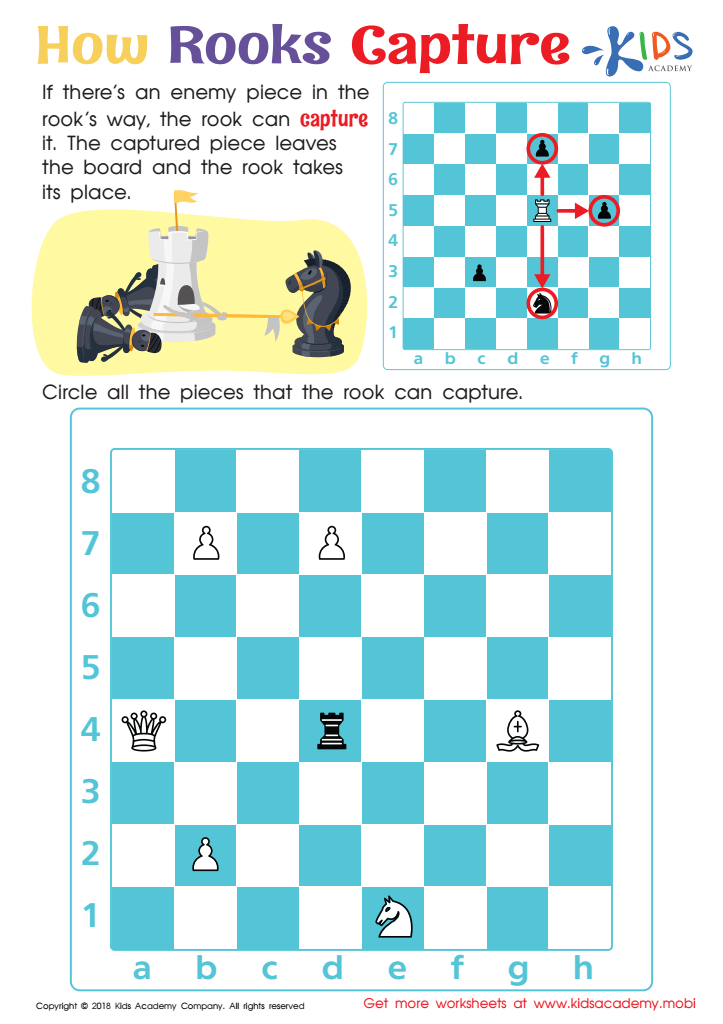

How Rooks Capture Worksheet
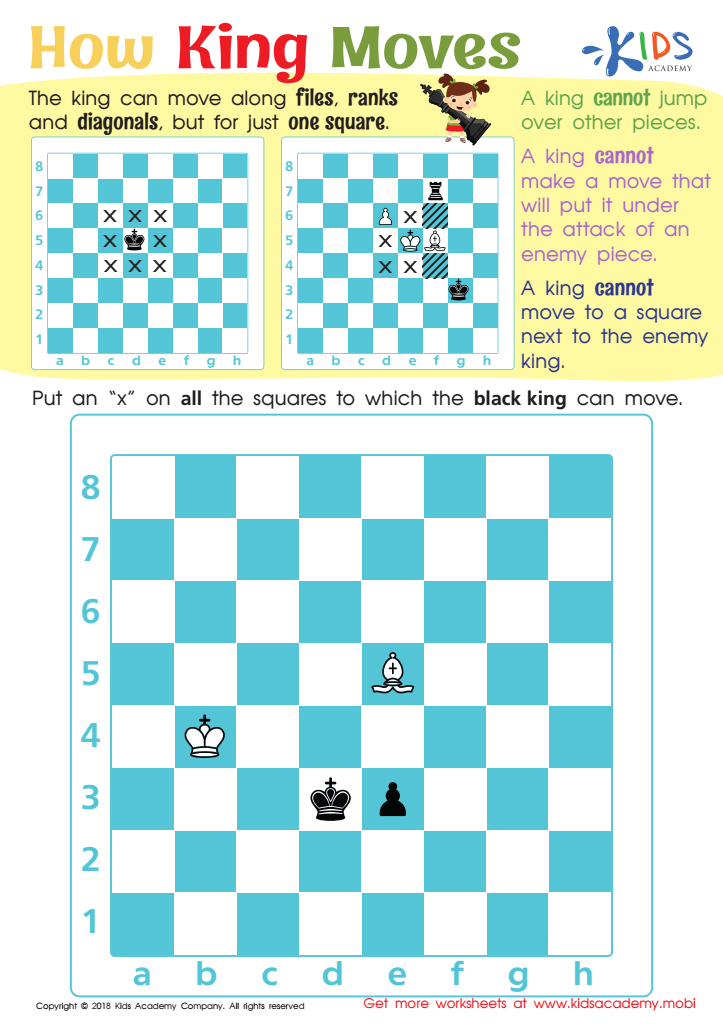

How King Moves Worksheet
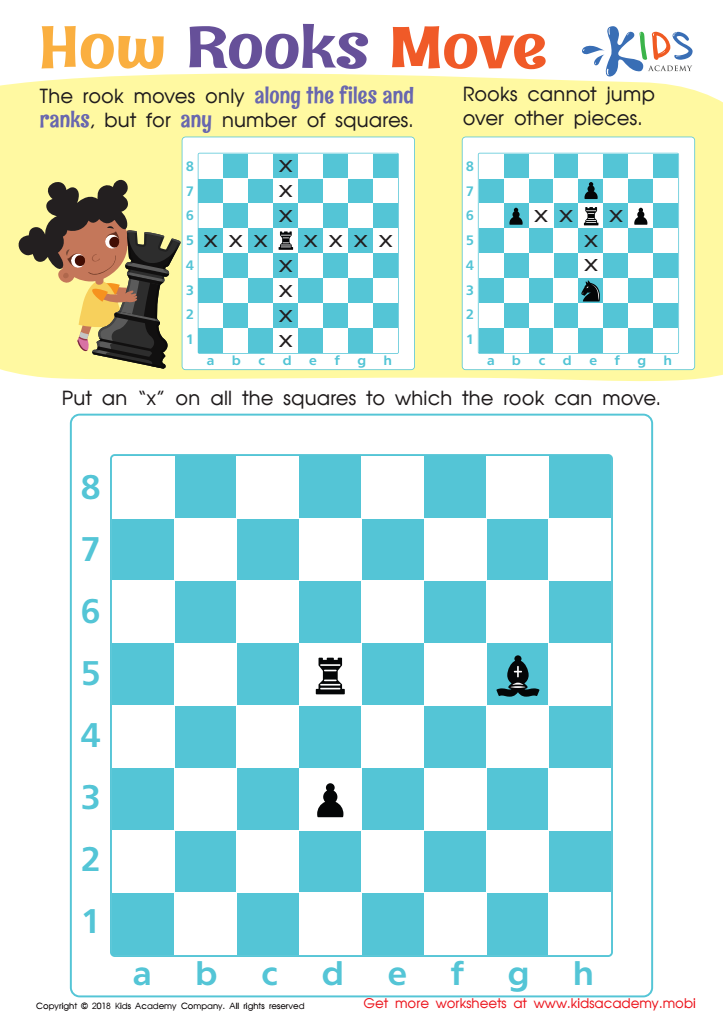

How Rooks Move Worksheet
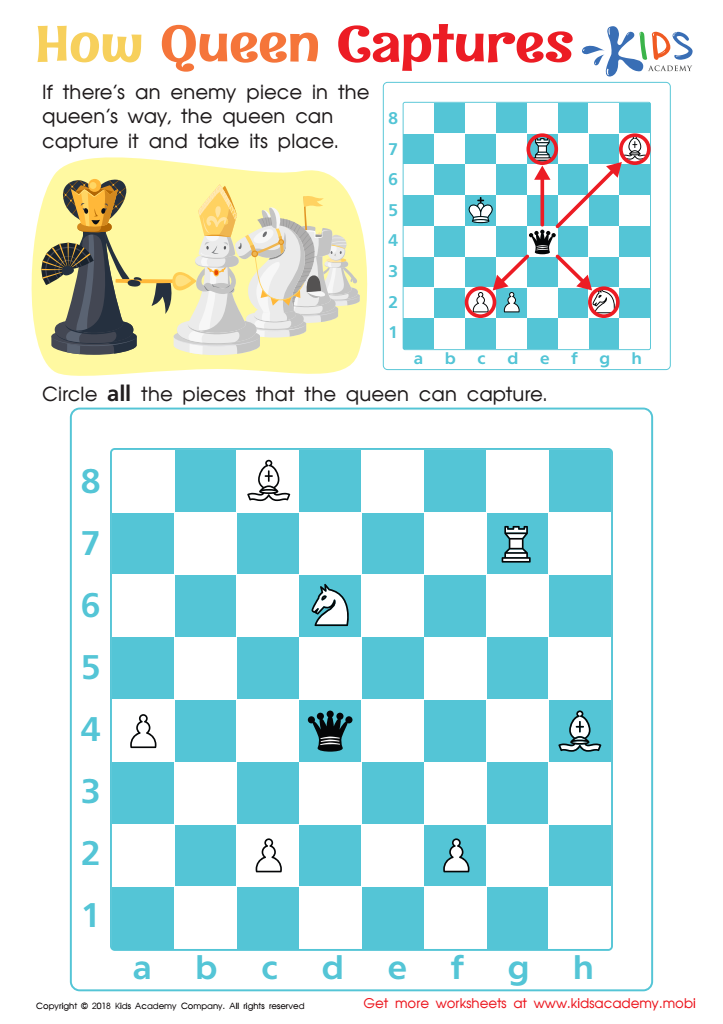

How Queen Captures Worksheet
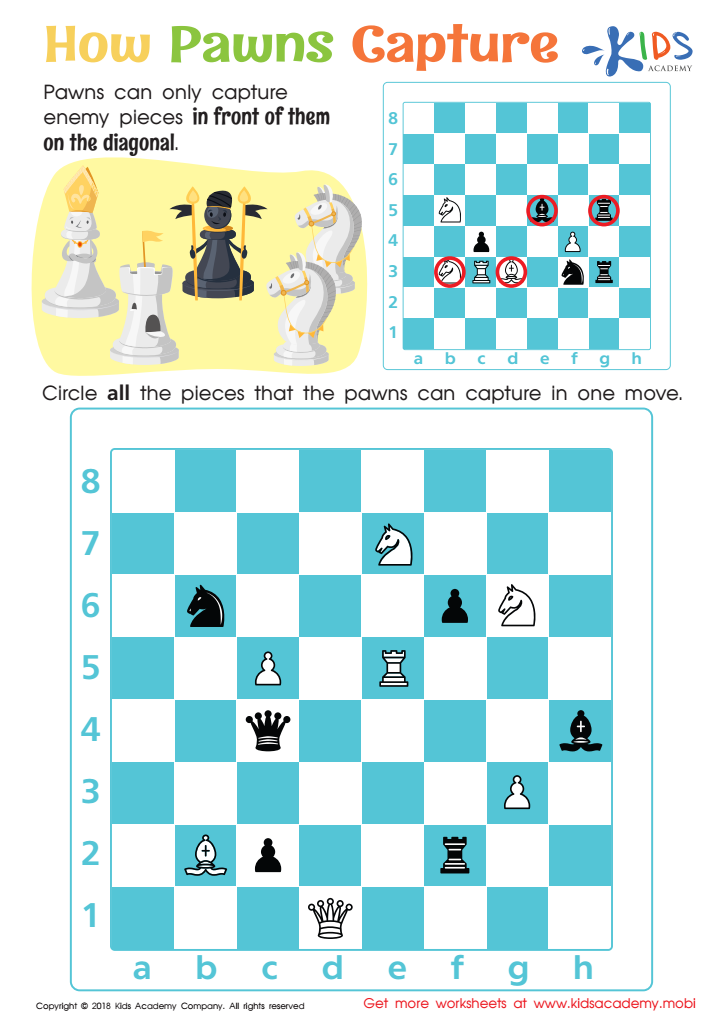

How Pawns Capture Worksheet
Understanding chess rules is vital for parents and teachers, especially for children aged 3-7, as it supports cognitive development and social skills. Learning the foundational concepts of chess introduces young minds to critical thinking and problem-solving, which aids them in understanding patterns, making decisions, and predicting outcomes—essential skills for academic success.
Moreover, chess fosters patience and perseverance. As children learn to navigate the chessboard, they experience both winning and losing, teaching them resilience and the importance of sportsmanship. Engaging in a structured game like chess also promotes focus and concentration, which benefits their attention span and listening skills in a classroom environment.
Additionally, chess can serve as a bonding activity between parents and children, encouraging family interaction and shared experiences. This collaborative learning can deepen relationships and create lasting memories while instilling a love for strategic thinking games.
In summary, understanding chess rules provides children with valuable cognitive skills, enhances social interactions, and offers enriching experiences for families, making it a worthwhile pursuit for both parents and teachers in their educational efforts.
 Assign to My Students
Assign to My Students
















